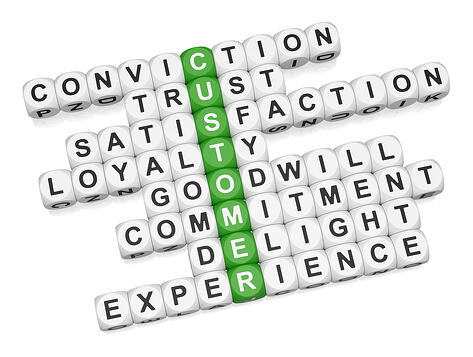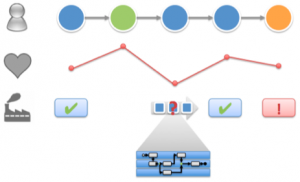Customer Journey Business Analysis Customer Experience Business Architecture
Customer journeys as a strategy guide

A while ago, I published an article in the IRM UK newsletter on business process modelling. In the article, I explain the value of and relation between different kinds of process models. I also propose to use customer journeys to guide strategic choices and investments in process (and other) improvements. In this post, I briefly summarise the key messages of the article and elaborate on how to use customer journeys as a guide for your strategic investments.

Three kinds of processes
- Customer journeys at the highest level describe how customers interact with your organisation and other organisations, using multiple products and services, to fulfil their needs. The example I use in the article is a travel experience, from the initial idea all the way to sharing the experience afterwards.
- End-to-end processes describe how an organisation responds to a customer requesting a specific service during a step in his journey. An example here is the process of selecting a vacation, making the reservation, paying for it and receiving all travel information and vouchers.
- Activities describe the details of each step in the end-to-end process. For example, making the reservation includes checking hotel and flight availability, confirming the reservation with the hotel and airline, preparing and sending the invoice and following up on the payment.
Customer journeys as a guide for your strategic investments
In the end, commercial companies have a very specific goal: making money. In order to do so, they sell products and services. However, customers are not interested in products or services. They are interested in getting a need fulfilled. In our travel example, my need is to have a great travel experience. The travel agent and the hotel just happen to provide products and services that hopefully help me fulfil this need. Most of the time, these products and services will only fulfil part of the customer’s need. (By the way, nonprofit organisations may have a nonmonetary purpose, but they are just as well trying to create some kind of value by providing their customers with a product or a service that fulfils some need, so a similar reasoning holds for them.)
Customers are not interested in products or services, they want their needs fulfilled. - Tweet this
Consider this simple example: the customer is driving to his hotel himself. Along the way, he is stopped and gets a fine for not having a mandatory toll ticket. Such a simple event clearly influences the travel experience. While it is not part of the travel agent’s product or service offering (yet), it does influence the customer’s journey. By identifying such points in the customer journey, the travel agent detects gaps in his offering. This gap is an example of a red exclamation mark in the figure above. Filling these gaps can improve the customer experience and increase customer loyalty. When the service we give exceeds the customer's expectations, they will more easily come back.
This is only a small example for illustrative purposes. I’m sure you can find other examples that have a bigger impact on the customer experience. Identifying these gaps and choosing which gaps you want to close is a way to define and formulate your strategy. Where are you going to play and where are you going to pass? Filling which gaps will extend your offering in a natural way, from a customer perception point of view? These questions are triggered by investigating the customer need and customer journey thoroughly , and should be at the heart of your strategy definition.








